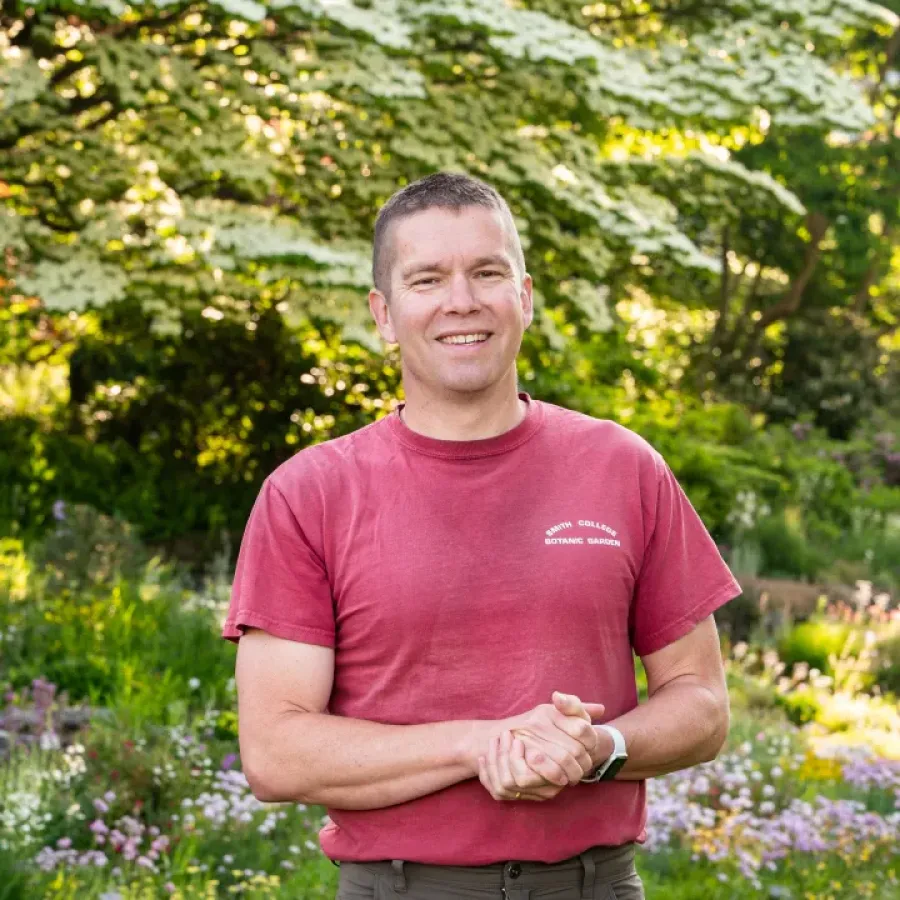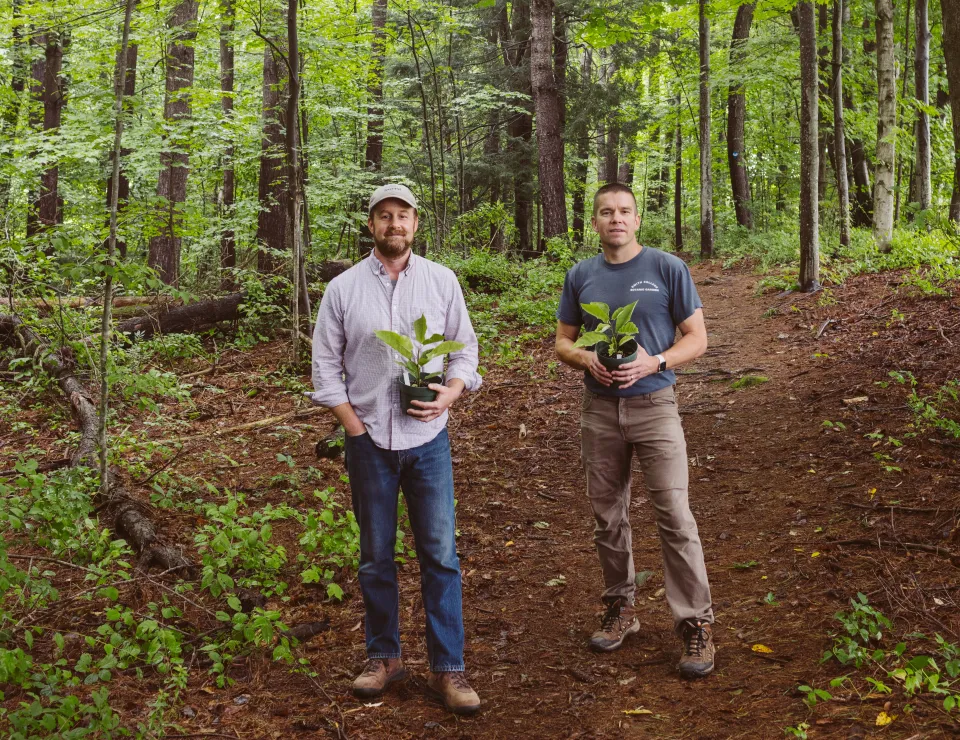Telling the Stories of Plants
Sustainability
A conversation with John Berryhill of the Botanic Garden of Smith College

Published April 23, 2024
Ask John Berryhill to name his favorite part of the Botanic Garden of Smith College and he doesn’t hesitate: “The trees; the old trees,” he says.
“Take the [150-plus-year-old] elm tree on Chapin lawn,” says Berryhill, who began serving as interim director of the botanic garden in January. “That wood of that tree literally holds the breath of every single Smithie who has ever been on campus.”
A member of the botanic garden staff since 1997, Berryhill brings deep knowledge of Smith’s horticultural traditions to his new role—yet he is not bound by the past. He sees his work as part of an ongoing team effort to reveal “what a 21st-century botanic garden can be.”
That involves partnering with global plant conservation groups and tribal organizations on groundbreaking conservation and research, while maintaining the campus’ cherished 129-year-old arboretum.
“Our goal is to honor the love that alums have for this place, while connecting students to the breadth and depth of new educational opportunities offered by the botanic garden,” Berryhill says. “I love what we do here, and I think we can tell that story a little louder.”

Associate Professor of Biological Sciences Jesse Bellemare, left, and John Berryhill with young magnolia trees at Smith’s MacLeish Field Station in Whately, Massachusetts.
Here’s what Berryhill had to say about his work at the botanic garden.
What’s changed the most about the botanic garden in the 27 years you’ve been at Smith?
“Botanical science used to be hidden behind a wall of scientific jargon, with people perceived as experts building the collections. The two main measures of success being quantity and rarity. But understanding the plant world is really about understanding the living world around us and our obligation to it; the extreme peril that botanical communities are experiencing now. There are about 450,000 species of plants on Earth and about 180,000 are threatened with extinction. That’s more than all the described species birds, mammals, fishes, reptiles and amphibians combined. We have to learn to bring our collections to life for people in new ways, and make the building of those collections more visible. Mistaking the quietness of plants as a lack of importance is a mistake that will cost both us and them dearly.”
What has not changed?
“The strong sense of place and connection to our landscape. It is wonderful to talk to an alum back for her 50th Reunion and hear the pride they take in how the botanic garden is part of Smith’s DNA. They literally got to live in a botanic garden for a few years. Not many people can say that and it means something to them. My colleagues and I take our work very seriously because of this.”
What current projects are you most excited about?
“I’m excited that the collections building we are doing now is centered around projects that give students real-world experience with topics they are exploring in the classroom. For example, sweetgrass holds a high cultural significance for the indigenous people of the region. We’re reaching out to the chief of the Hassanamisco Band of the Nipuc Nation—people with a very long horticultural relationship to this land—and our students will be collecting and sowing sweetgrass seeds to be planted at MacLeish Field Station, with the intention of sharing plant material with that community. We hope we can also give the plants to participants in the We the Land gathering that will be happening at Smith in August.
“Another project stems from research focusing on how small-range botanic species are responding to climate change. We’re really lucky that Jesse Bellemare [associate professor of biological sciences] is here working with students on what this means for native magnolia trees and how our research could be applied to other species and inform conservation collection building. The Global Conservation Consortium for Magnolia has asked us to be the species steward for mountain magnolias and take the lead on a formal action plan to conserve this species’ genetic diversity.
“We’re also partnering with a student AEMES scholar on communications—tying what’s happening at Smith with global efforts to conserve trees and making that story accessible to our audiences. We have a three-year grant to develop communications tools and programming to expand participation in collaborative conservation work. This will give Smithies a seat at the table as global scale work is being discussed!”
You’ve worn many hats at the botanic garden—most recently, as landscape curator. How do you feel about being interim director?
“I miss having dirt under my nails, but I’m pulled to this role because of my love for all that the team is doing now. We’re able to see how our work is nested in the overall priorities of the college. We’ve stopped saying we are going to collect a million roses as objects of beauty. There’s a place for that, but what we want to do is plant a flag for conservation, reciprocity, and equity. When I started here, the botanic garden felt like a cherished part of the past. Now, it feels like part of where we’re going for the future.”